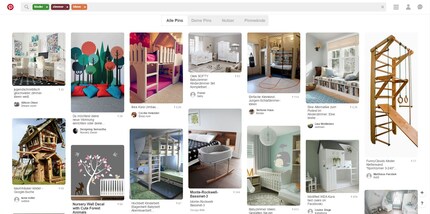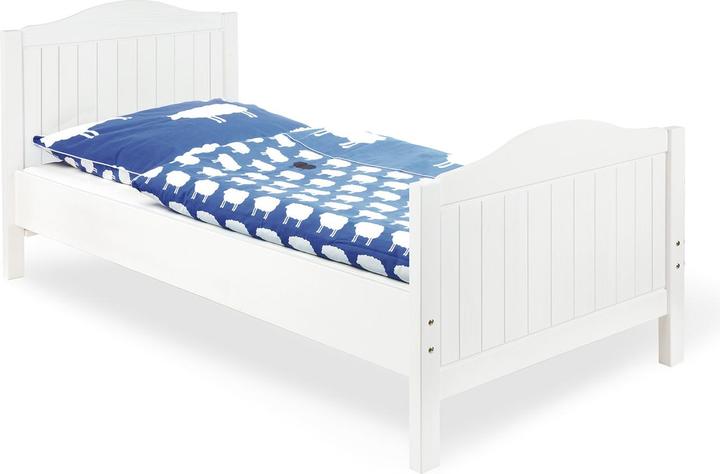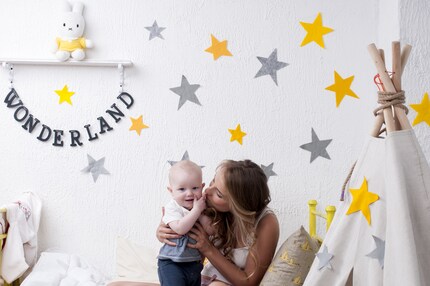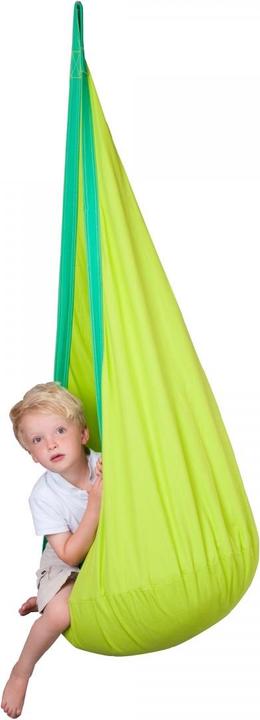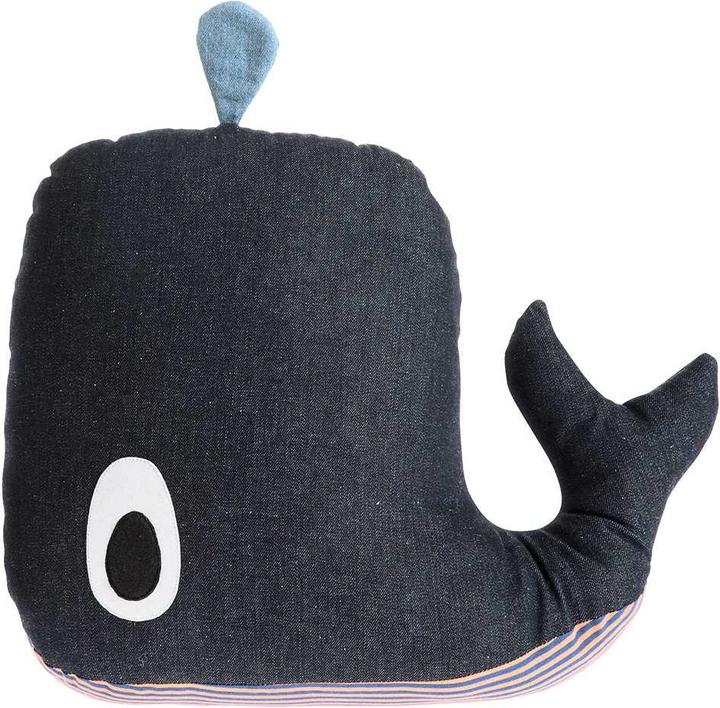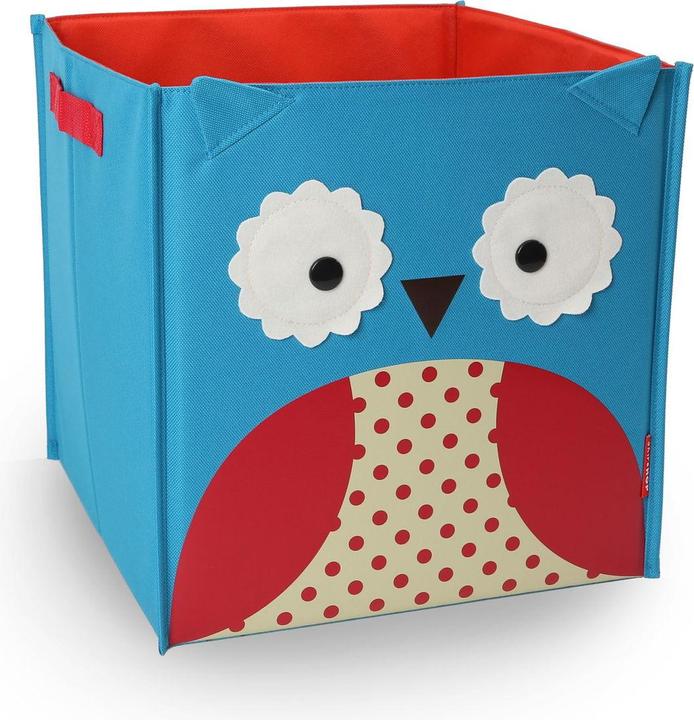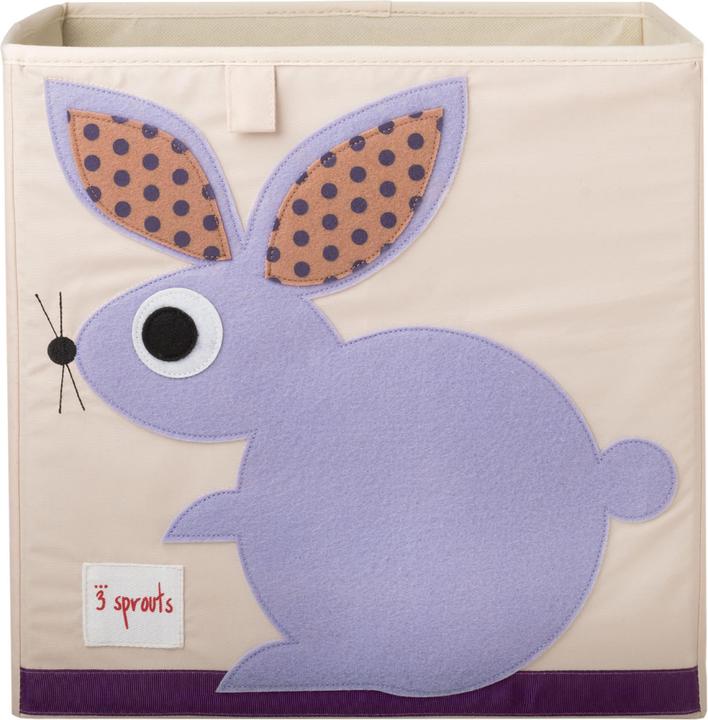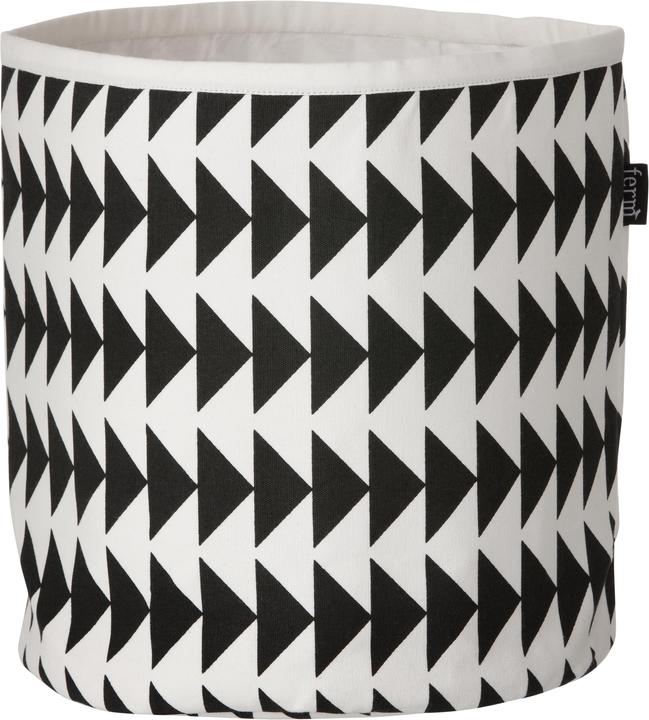

A kingdom for children
Children bring change to the home. The children's room is an important element in their development. It is important to design a space in which the little ones can let off steam, develop creatively and relax, and which fulfils their everyday needs and wishes.
Screenshot from PinterestLarge boxes, storage boxes, woven baskets and drawers integrated into furniture help to keep the children's room tidy. They create storage space for books, toys and cuddly toys. A loft bed is suitable for children's rooms with limited space. This provides enough space for playing or working in the lower area. The older children get, the more active they are and the more space they need.
Beautiful ideas such as climbing nets, paintable walls, hanging caves or height markers made of foil on the wardrobe to measure height create excitement and fun in the children's room. Get creative and make your little ones happy with the design of their room, because nothing is more beautiful than a happy and contented child's smile.
What might interest you:
I like to spend my time with creative projects, friends & family and delicious recipes from all over the world. Travelling to distant countries, discovering foreign cultures and observing people are the cornerstones of my creativity. All this inspires and motivates me in my work. The challenge of giving a room or an object a soul, arousing emotions and at the same time creating something functional and practical fascinates me. I think interests only become passions when you can share them not only with yourself but also with other people. Together with my colleague Michael Sollberger I founded the interior design studio "MOOMII" in 2016.
Interesting facts about products, behind-the-scenes looks at manufacturers and deep-dives on interesting people.
Show all